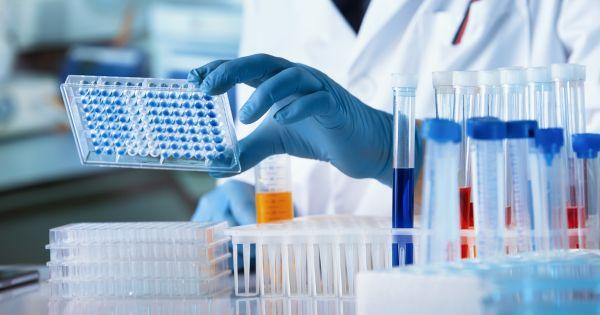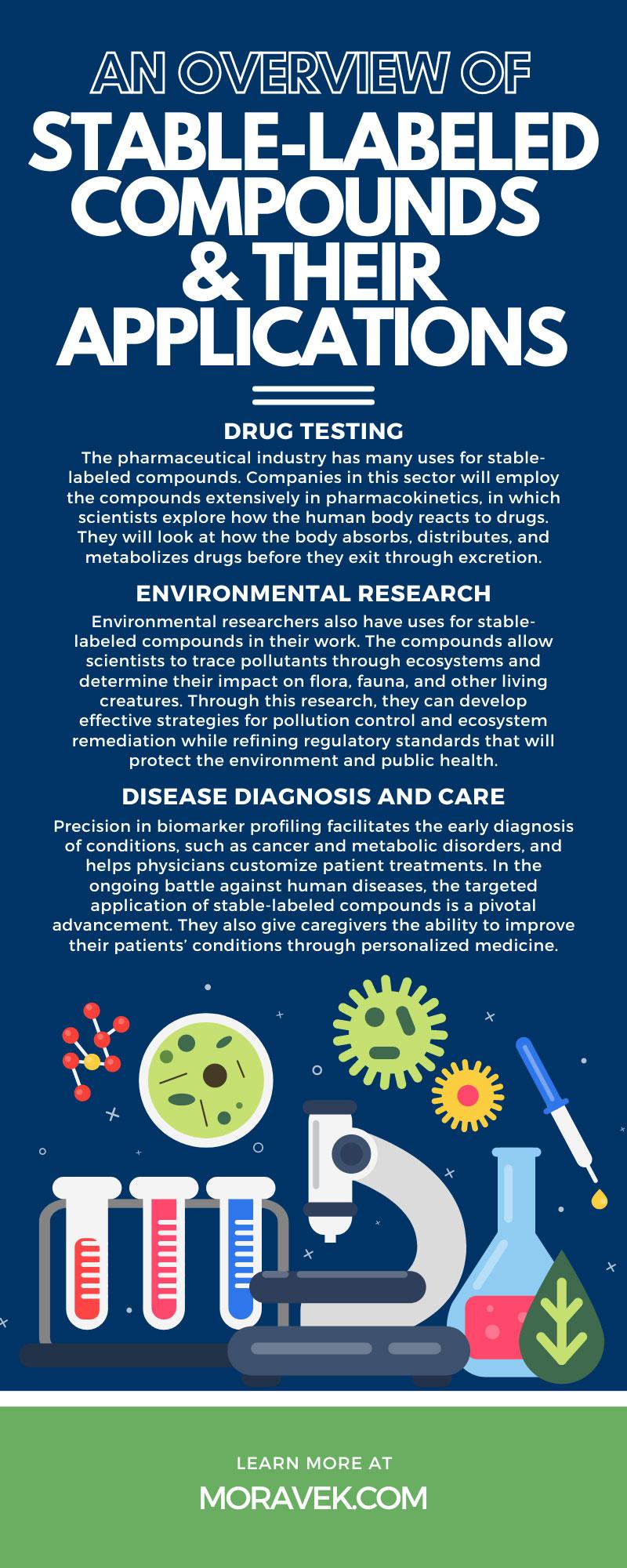
Researchers and scientists can utilize a broad range of tools and substances, including stable-labeled compounds, to assist them in their work. They can harness the unique properties of these compounds to peel back the layers of molecular mysteries and gain unique insights. If you want to learn more about using this analytical method in your research, read this overview of stable-labeled compounds and their applications.
What Are Stable-Labeled Compounds?
Stable-labeled compounds are substances in which scientists have switched out atoms within the compounds with isotopes. Fortunately, the isotopes are non-radioactive and quite stable, preventing them from decaying over time. Researchers often use carbon, nitrogen, or hydrogen for the isotopes.
Some people might wonder whether the incorporation of stable isotopes would have an adverse impact on research data, but fortunately, it does not. Instead, this process gives the molecule a unique signature without altering its biological properties.
This allows researchers to track the compounds with precision as they move through various systems or react within different processes. As a result, researchers can investigate metabolic pathways, quantify the rate of chemical reactions, study the interaction of the labeled compound with other molecules, and learn more about complex biochemical mechanisms.
What Are the Applications of Stable-Labeled Compounds?
Now that you understand how stable-labeled compounds work, it is time to explore their applications. These compounds are very useful in a broad range of industries, reflecting their versatility in scientific exploration.
Drug Testing
The pharmaceutical industry has many uses for stable-labeled compounds. Companies in this sector will employ the compounds extensively in pharmacokinetics, in which scientists explore how the human body reacts to drugs. They will look at how the body absorbs, distributes, and metabolizes drugs before they exit through excretion.
This information is crucial for ensuring drugs are effective in treating medical conditions and have the desired effects. It can also help drug testing professionals ensure the drug is safe for people to consume, as well as determine the best way to take or administer the medication.
Doctors can utilize this information when prescribing drugs to patients, and they must consider aspects like dosage. Stable isotopes play a crucial role in drug metabolism studies, which help researchers predict how a drug may interact with various bodily systems.
Environmental Research
Environmental researchers also have uses for stable-labeled compounds in their work. The compounds allow scientists to trace pollutants through ecosystems and determine their impact on flora, fauna, and other living creatures. Through this research, they can develop effective strategies for pollution control and ecosystem remediation while refining regulatory standards that will protect the environment and public health.
Disease Diagnosis and Care
The application of stable-labeled compounds in healthcare is not limited to drug creation and development. These compounds can be critical instruments for healthcare providers when they must detect and monitor diseases in patients. By incorporating isotopically labeled biomolecules into diagnostic assays, clinicians can track and quantify disease biomarkers with heightened accuracy and sensitivity.
Precision in biomarker profiling facilitates the early diagnosis of conditions, such as cancer and metabolic disorders, and helps physicians customize patient treatments. In the ongoing battle against human diseases, the targeted application of stable-labeled compounds is a pivotal advancement. They also give caregivers the ability to improve their patients’ conditions through personalized medicine.
Proteomic Research
Stable-labeled compounds are indispensable in proteomic research. These compounds act as molecular beacons that allow scientists to track protein expression, modifications, and interactions within cells. By using isotopically labeled amino acids, researchers can perform quantitative mass spectrometry to measure protein abundance and dynamics over time.
This approach lays the groundwork for developing innovative therapies and diagnostic tools that target proteins implicated in various diseases. The use of stable-labeled compounds in proteomics exemplifies their powerful impact on the elucidation of biological pathways and furthers the quest for precision medicine in the healthcare industry.
Food Tracking and Analysis
Food manufacturers use stable-labeled compounds to authenticate the origin of food products and detect adulteration. By tracing isotopes through various food pathways, scientists can confirm if a product originates from a claimed geographical location.
For example, if a consumer buys organic meat from an animal that the manufacturer claims was raised “on a farm in upstate New York,” scientists can determine whether it actually was. They might find the product features a label that is misleading shoppers.
This information is particularly important for products that command a premium price due to their purported quality and place of origin, such as organic produce, single-origin coffee, or olive oil.
Metabolomic Research
Metabolomic researchers harness the power of stable-labeled compounds to dissect complex metabolic networks and understand the subtle changes in metabolism that occur in response to disease, drugs, or environmental factors. The isotopic labeling of metabolites ensures accurate tracking within these intricate systems.
When researchers use these compounds in conjunction with advanced analytical techniques—mass spectrometry and nuclear magnetic resonance spectroscopy—they can gain an in-depth view of the metabolome. Then, researchers can identify biomarkers for disease, study drug efficacy and toxicity, and explore the metabolic basis of genetic disorders. Stable-labeled compounds are invaluable for uncovering the molecular underpinnings of health and disease.
Forensic Science
Stable-labeled compounds can play a significant role in helping us solve crimes. These compounds have made a mark within the field of forensic science and legal investigations. They provide forensic experts with unique markers to analyze substances with a high degree of specificity. Some examples include determining the authenticity of drugs, detecting doping in sports, or identifying toxic substances in cases of poisoning.
These compounds facilitate the determination of the geographic origins of illicit materials by comparing isotopic signatures. Moreover, their stability and precision allow for the reconstruction of environmental conditions at the time of an event, offering insights into crimes that hinge on environmental evidence.
As these examples show, stable-labeled compounds are integral to scientific research. Moravek provides stable-labeled compound and radiolabeling services that can assist you in drug creation and development or biotech research. We have served clients around the world for more than 50 years and have the expertise to meet the requirements of your research.

